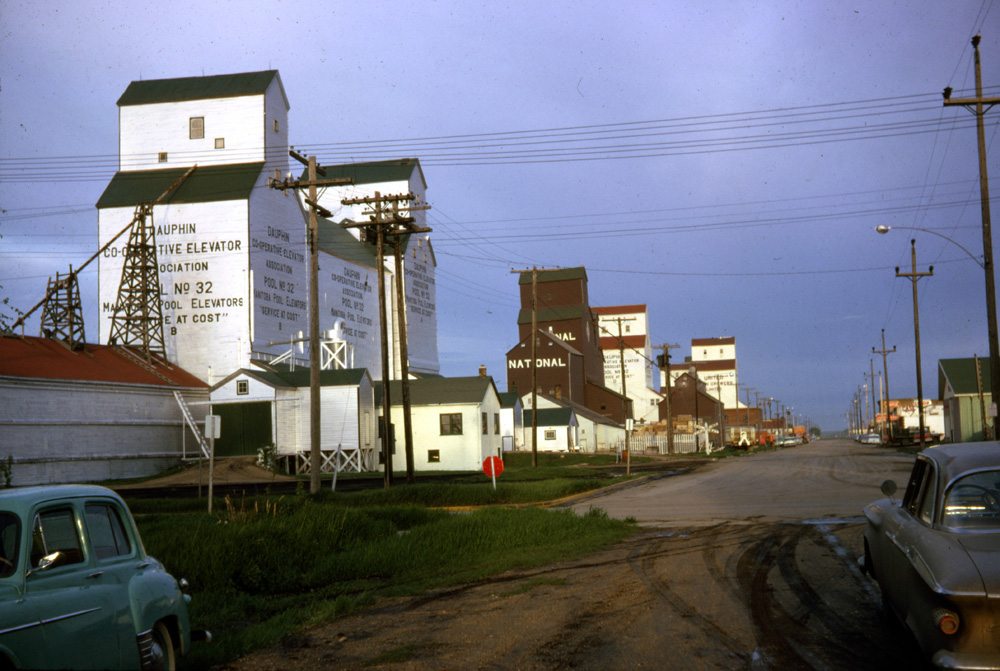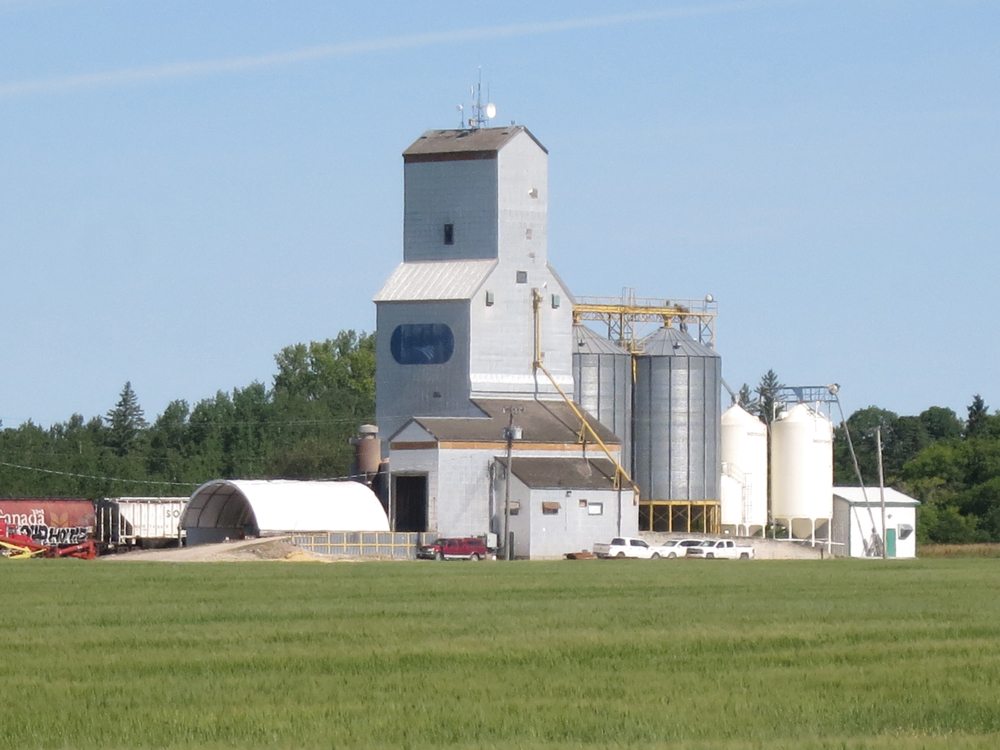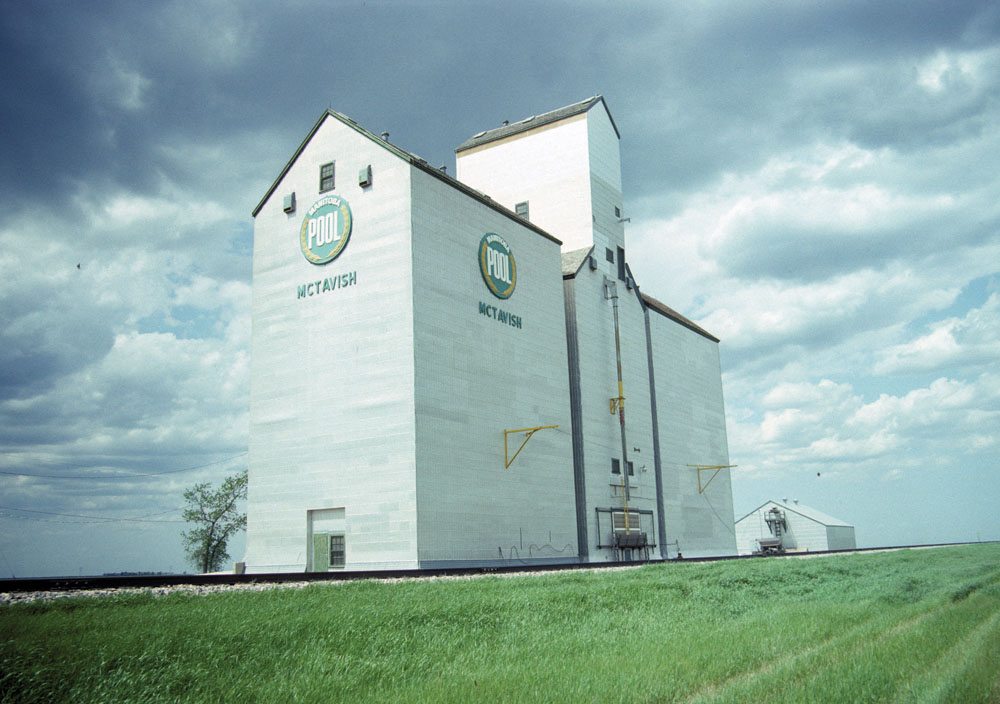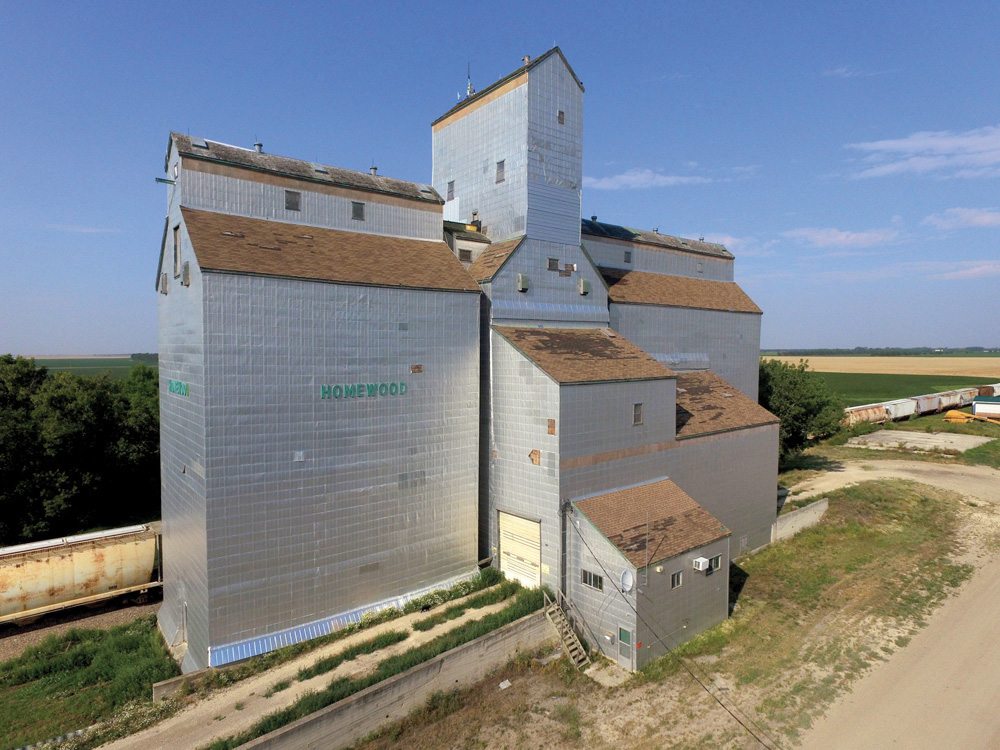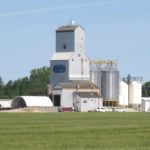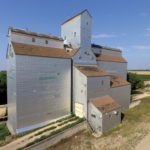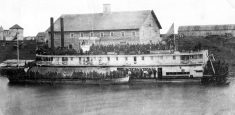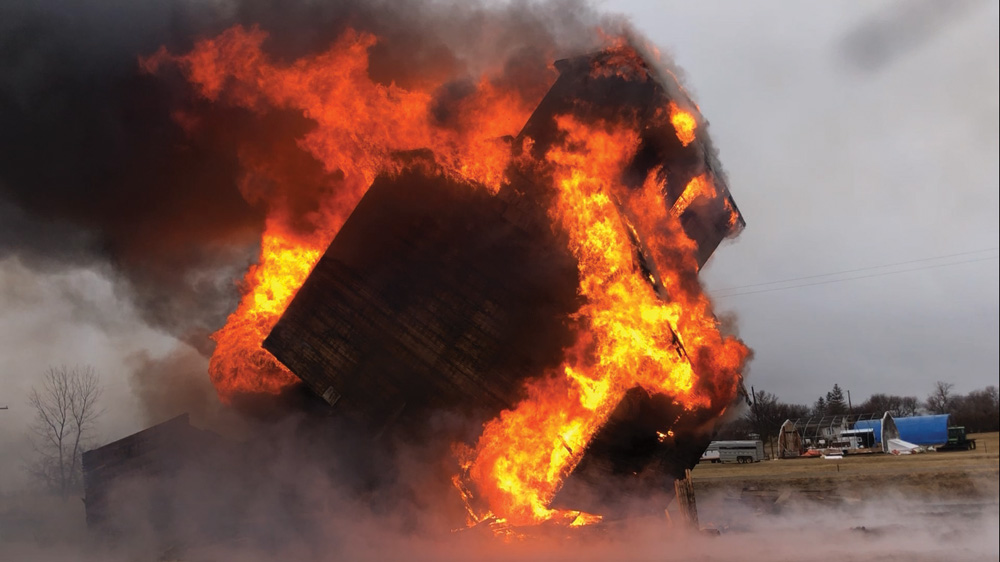
Medora UGG_cmyk.jpg
This 1972 photo shows the Manitoba Pool and United Grain Growers elevators at Medora, in what was then known as the RM of Brenda. The 177,000-bushel Pool elevator and crib annex dated from 1928 and 1967, respectively. The 131,000-bushel UGG facility consisted of an elevator from 1932 that was modernized when a crib annex was built beside it in 1963. The UGG elevator and annex, filled to capacity with wheat, flax, and canola, were destroyed by fire in December 1980. A replacement elevator was constructed in the fall of 1981 and opened for business in January 1982. It was closed by Agricore in 2000 but remains in use for private grain storage. The Pool buildings were demolished in 2002.
Photo: University of Manitoba Archives & Special Collections
Dauphin Pool.jpg
When this photo was taken in 1960, Dauphin’s “elevator row” along First Avenue had six members. At left was a Pool elevator dating from 1927 and labelled B when Pool A was built beside it in 1948. The brown National elevator in centre was built in 1952 and a preceding elevator was converted to an annex. Behind it was Pool D, acquired from Lake of the Woods Milling in 1959, that by 1962 had become United Grain Growers’ #2 elevator. At right was the original UGG elevator built around 1918, about the same time that another elevator, not visible behind UGG #1, was built by the Liberty Grain Company. It was sold to Searle Grain in 1929. All of them are now gone.
Photo: University of Manitoba Archives & Special Collections
Netley Pool_CMYK.jpg
An elevator at Netley Siding, on the CPR Winnipeg Beach Subdivision in the RM of St. Andrews, was built in 1948 by Manitoba Pool Elevators. Renovated between February and August 1986 at a cost of about $557,000, its capacity was doubled to 73,000 bushels with the addition of two steel tanks. A new driveshed featured a fully electronic scale and a dust-collecting system was installed. The facility was reopened at a ceremony on August 15, 1986. Closed on October 31, 2000, it remains in use for private grain storage.
Photo: Gordon Goldsborough
McTavish Pool_CMYK.jpg
A 40,000-bushel wooden grain elevator at McTavish, in the Rural Municipality of Morris, was built in 1937 by Manitoba Pool Elevators. For increased storage capacity during the Second World War, two temporary balloon annexes were built in 1940-41 and 1941-42. They were replaced by a single crib annex in 1966, joining an Overgaard annex built in 1954, raising its total capacity to 158,000 bushels. Extensive renovations were made in 1970 and 1977. Closed by Agricore in 2002, the elevator was demolished in 2003.
Photo: Manitoba Historic Resources Branch
Homewood Pool_cmyk.jpg
In late 1975, the CPR line between Carman and Kronsgart was abandoned. The Manitoba Pool elevator at Kronsgart closed in December 1976. It had been built for a local co-operative in 1952, along with a crib annex, to replace an elevator destroyed by fire in December 1949. A second crib annex had been added to it in 1955. In 1979, the Kronsgart elevator and annexes were moved 16 miles north to Homewood where they were renovated into a modern, high-throughput facility with a capacity of 186,000 bushels. Closed by Agricore in 2002, the elevator was sold into private ownership and put up for sale again in late 2014.
Photo: Gordon Goldsborough, August 2017
In the 1950s, there were over 700 grain elevators in Manitoba. Today, there are fewer than 200. You can help to preserve the legacy of these disappearing “Prairie sentinels.”
The Manitoba Historical Society (MHS) is gathering information about all elevators that ever stood in Manitoba, regardless of their present status. Collaborating with the Manitoba Co-operator it is supplying these images of a grain elevator each week in hopes readers will be able to tell the society more about it, or any other elevator they know of.
MHS Gordon Goldsborough webmaster and Journal editor has developed a website to post your replies to a series of questions about elevators. The MHS is interested in all grain elevators that have served the farm community.
Read Also

Reaction rolls in on Health Canada dicamba restriction proposal
Spray expert says proposed dicamba rule change would ban ‘over the top’ use of the herbicide
Your contributions will help gather historical information such as present status of elevators, names of companies, owners and agents, rail lines, year elevators were built — and dates when they were torn down (if applicable).
There is room on the website to post personal recollections and stories related to grain elevators. The MHS presently also has only a partial list of all elevators that have been demolished. You can help by updating that list if you know of one not included on that list.
Your contributions are greatly appreciated and will help the MHS develop a comprehensive, searchable database to preserve the farm community’s collective knowledge of what was once a vast network of grain elevators across Manitoba.
Please contribute to This Old Grain Elevator website here.
You will receive a response, by email or phone call, confirming that your submission was received.
Goldsborough is interested in hearing all sorts of experiences about the elevators — funny, sad, or anything in between. Readers willing to share their stories can leave messages at 204-474-7469.

